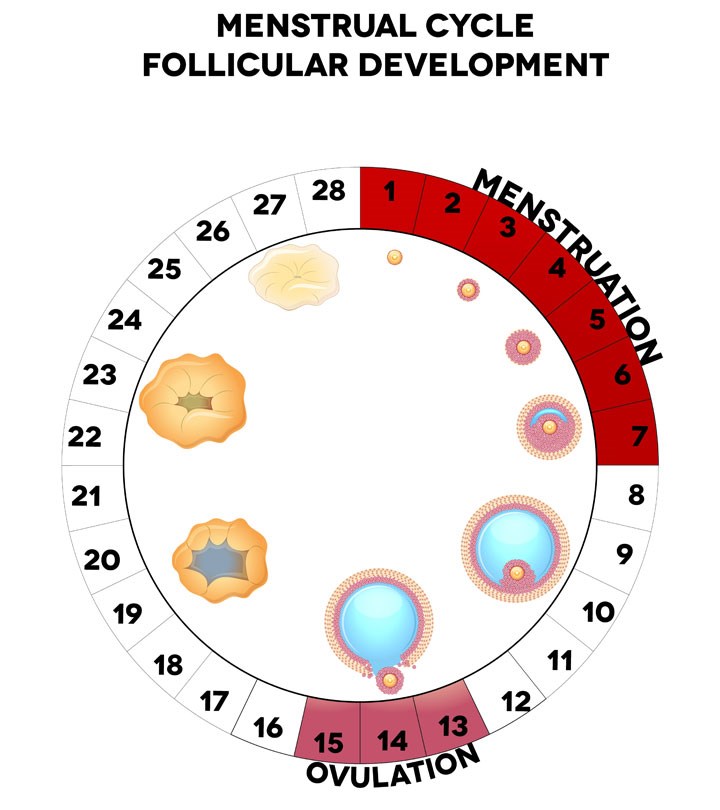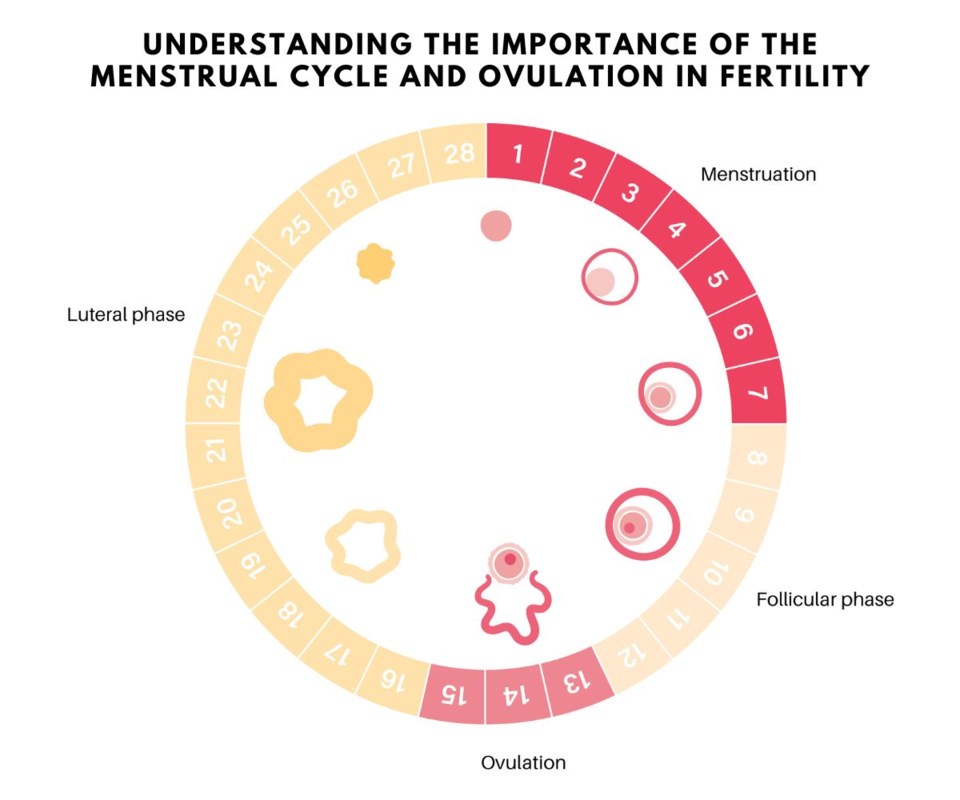UNDERSTANDING the menstrual cycle and ovulation is essential for anyone planning a pregnancy or simply wanting to understand their reproductive health better.
The menstrual cycle prepares the female body for potential pregnancy each month. Here, we delve into the details of the menstrual cycle and ovulation, and how these factors influence fertility and timing of conception.
THE MENSTRUAL CYCLE:
The menstrual cycle is typically counted from the first day of one period to the first day of the next. It is governed by a series of hormonal changes orchestrated by the hypothalamus, pituitary gland, and ovaries. The cycle can vary in length from person to person but averages around 28 days, with variations considered normal.
PHASES OF THE MENSTRUAL CYCLE:
MENSTRUAL PHASE (DAYS 1-5): The menstrual cycle begins with menstruation, where the uterine lining sheds if fertilisation does not occur during the previous cycle. This phase is characterised by bleeding and lasts on average 3 to 5 days.
FOLLICULAR PHASE (DAYS 1-14): Following menstruation, the follicular phase begins. During this phase, follicle-stimulating hormone (FSH) stimulates the growth of follicles in the ovaries, each containing an egg. Typically, one dominant follicle continues to grow while others regress. Estrogen levels rise, preparing the uterus for potential pregnancy.
OVULATION (AROUND DAY 14): Ovulation marks the release of a mature egg from the dominant follicle into the fallopian tube. This usually occurs around the midpoint of the menstrual cycle, triggered by a surge in luteinising hormone (LH). Ovulation is a key moment for conception, as the egg is viable for fertilisation for about 12 to 24 hours after release.
LUTEAL PHASE (DAYS 15-28): After ovulation, the ruptured follicle transforms into a structure called the corpus luteum, which produces progesterone. Progesterone helps thicken the uterine lining in preparation for the implantation of a fertilised egg. If fertilization does not occur, hormone levels decline, causing the uterine lining to shed, and menstruation begins anew.
OVULATION AND FERTILITY:
Understanding when ovulation occurs is crucial for couples trying to conceive. Ovulation typically happens around day 14 of a 28-day cycle, but this can vary widely. Factors such as stress, illness, and lifestyle changes can influence the cycle length and timing of ovulation. Monitoring fertility signs can help predict ovulation:
BASAL BODY TEMPERATURE (BBT): A slight rise in basal body temperature after ovulation indicates that ovulation has occurred.
CERVICAL MUCUS: Changes in cervical mucus consistency and volume can indicate fertile days. Around ovulation, cervical mucus becomes clear, slippery, and stretchy, resembling raw egg whites.
OVULATION PREDICTOR KITS (OPKs): These kits detect the surge in LH that precedes ovulation, helping pinpoint fertile days.
TIMING INTERCOURSE FOR CONCEPTION:
To maximise chances of conception, couples are advised to have intercourse during the fertile window—typically the days leading up to and including ovulation. Sperm can survive in the female reproductive tract for several days, so having intercourse before ovulation increases the likelihood of sperm being present when the egg is released.
Understanding the menstrual cycle and ovulation is empowering for individuals and couples navigating fertility and reproductive health. Whether planning a pregnancy or simply monitoring overall health, awareness of these processes allows for informed decisions and proactive healthcare practices. By understanding the timing of ovulation and factors influencing the menstrual cycle, individuals can optimise their chances of conception and maintain reproductive wellness throughout their lives.




